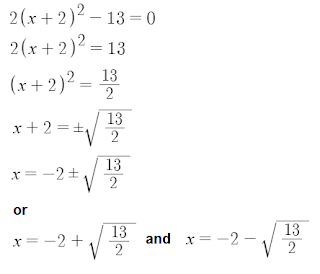Before calculators, people learning logarithms had to use logarithmic tables of different bases. Here we will us base-10 logarithmic tables.
Say we wanted to find the log of 15. We then have to look on the first column of the logarithmic table and find 15.
As 15 lies between 10(10
1) and 100(10
2), the characteristic - the integer before the decimal place - will be 1 as the logarithm of 15 has to be between 1 and 2. The numbers after the decimal place is known as the mantissa.
In this case, 15 can be written as 15.0. The top row of numbers is the third digit of the number. As 0 is the third digit, we have to look at the cell where the column 0 and the row headed 15 meet. This cell is shown below.
The digits in the red box are the mantissa. Joining the mantissa with the characteristic show us that the log of 15 is 1.1761 (to 4 decimal places).
What if the number had two decimal places? If you wanted to find the log of a number like 25.29, you would follow the same steps, but you would also have to use the mean difference table.
The characteristic is 1, and as the digit after the decimal place is 2, we have to look at the cell where the row headed 25 meets the column headed 2. We do this because 2 and 5 are the first two digits of the number.
The mantissa in this case is .4014. However, as the fourth digit after the decimal place is 9, so we have to see where the row headed 25 meets the column headed 9 on the mean difference table. In some logarithmic tables, the mean difference table is next to the logarithmic table.
We see here that the mean difference is 15. We have to add the mean difference to the mantissa to find the digits behind the decimal place. 15 + 4014 is equal to 4029, so the log of 25.29 is 1.4029 (to 4 decimal places).
What if we had to find the log of 2.629? There does not seem to be any numbers less than 10 in the logarithmic table.
However, we can find the log of 2.629.
The first two digits are 2 and 6, so we have to look at the row headed 26. The third digit is 2, so we have to look at where the row and column meet.
The mantissa is .4183 and because 2.629 is between 0 and 10, its characteristic would be 0.
As the fourth digit is 9, we have to see where the row 26 meets with the column 9 in the mean difference table.
The mean difference is 15, so the digits after the decimal place is 15 + 4183, which equals 4198. The log of 2.629 is 0.4198.
A pattern emerges as we find the logs of numbers with the same digits, but the decimal place is in different places.
The log of 2.629 is 0.4198.
The log of 26.29 is 1.4198.
The log of 262.9 is 2.4198.
For numbers with the same digit order (to 4 significant figures) the mantissa is the same, but the characteristic increases by 1 for every shift left by the digits, and decreases by 1 for every shift to the right.
Try to solve these logarithms using the logarithmic tables above. Put your answers in the comments below.

















































